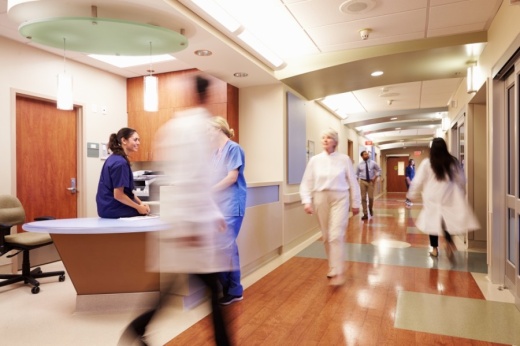Keith Barber, the CEO at Houston Methodist Willowbrook Hospital, said after nonessential businesses closed for several weeks in late March and April, the community benefited from social distancing and saw a drop in case numbers. But now that businesses have reopened, case numbers have peaked again with even greater effects locally.
Memorial Day was a turning point for the region, Barber said, as residents became “overconfident” and started neglecting government guidelines. For instance, during a May trip to an area Home Depot, Barber said he noted about 80%-90% of customers were wearing masks, and when he returned to the store in June, about 10%-20% were complying with face covering recommendations.
“I don’t think we were hearing as much from our state leaders and so forth about the need for social distancing and wearing masks and not congregating ... so our COVID numbers started really climbing,” he said. “We had a peak in April that went back down in May, and now the peak that we’re experiencing in June is more than double the peak that we had in April.”
May was also a bright spot for local hospitals as elective procedures began taking place again, bringing in more funds for health care operations and decreasing risks for patients who were previously forced to delay treatment, Barber said.
Physicians are once again having to prioritize elective procedures as COVID-19 patients increase and officials shift more resources to treat those patients.
“Financial outcomes are not what they are during normal times,” Barber said. “Obviously, we’ve had to ... use protocols to determine what elective procedures we do and which ones we delay, so that definitely has a negative impact on our organization financially.”
However, he said the hospital system’s strong financial standing has allowed officials to offer incentive pay for nurses working additional shifts and avoid furloughs and layoffs during the pandemic.
Hospital capacity, treatment
At Houston Methodist Willowbrook Hospital, there are universal floors where hospital beds can operate as intensive care units or non-ICU, which helps staff remain flexible depending on evolving needs. Barber said there have been about 70 beds devoted to COVID-19 patients, and the hospital is increasing that number to more than 100 to meet needs.
“One of the things that is different now than it was before is the mix of ICU versus non-ICU COVID [patients],” he said. “We had a heavier ICU mix back in April, and what we’re experiencing now in June is we’re seeing more younger people have acquired it, and so they don’t get quite as [sick], and they don’t require as many ICU beds.”
Barber said hospitals across the Greater Houston region are sharing resources and collaborating to manage capacities during this time. For instance, Houston Methodist Willowbrook has taken on patients from the Harris Health System and other hospitals in the Houston Methodist system facing capacity challenges.
“We definitely are able to handle where things are right now, but we need everybody to come together to keep it from growing more than it has been in our community,” he said.
Most COVID-19 patients at Houston Methodist Willowbrook are admitted through the emergency room. Some are able to be treated and discharged quickly, while more severe cases are admitted to a dedicated COVID-19 unit, Barber said.
In the last few months, Barber said the hospital has improved the patient experience by providing entertainment and media sources for those who may be isolated for long periods of time.
This includes providing iPads and Echo Dot devices fully stocked with movies, games and social media access so patients can stay connected with loved ones. The facility’s spiritual care department also places phone calls to each patient during their stay, he said.
Strict no-visitor policies are in place at this time at Houston Methodist Willowbrook with a few exceptions for mothers in delivery and end-of-life situations.
When it comes to the personal protective equipment supply, Barber said the hospital is in good shape and has also found new efficiencies to cut down on resource consumption, including shields that can be sanitized between patients.
Barber said the hospital plans to continue having a portion of the facility dedicated to COVID-19 patients at least through the end of 2020, but the biggest challenge during the coronavirus pandemic has always been predicting what tomorrow will bring.
“We know that things are going to ebb and flow, but ... we all need to continue to stay focused on what we know works—that is wearing masks, washing hands, not congregating,” Barber said. “We want businesses to be open, and we want people to thrive, but we’ve got to find creative ways to do that and keep social distancing.”





